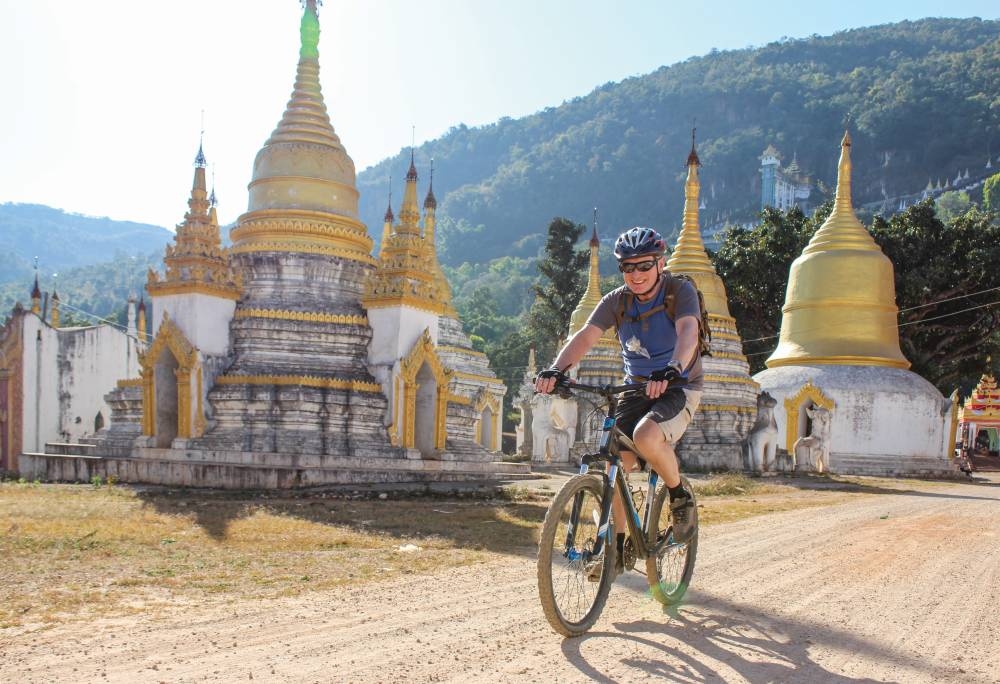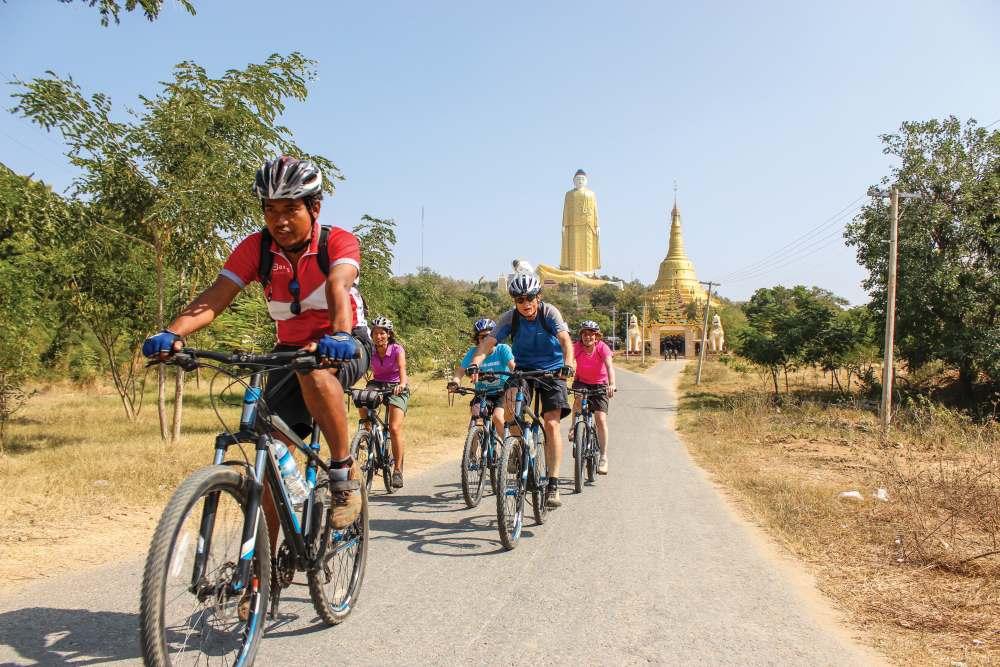- Details
- Written by: author
A little boy eyes me curiously from under the shade of his cap. His nose and cheeks painted white with the national make-up tanakha, he watches as I ride by, peddling fast through the warm Myanmar countryside. Perhaps it isn’t just curiosity, but a little envy, too; my two wheels are a little faster than the boy’s ‘ride’; a water buffalo that lumbers slowly down the road.

Sweaty travellers in Lycra are still a relatively new sight in Burma, especially to people living in little-visited rural areas. But the curiosity goes both ways, as I cycle through Myanmar. I’ve wanted to visit the country for years, but was wary of going until Nobel prize-winner Aung San Suu Kyi gave tourism the ‘green light’, in case it, in some small way, helped make a bad situation – the military dictatorship – worse.
Since the release of ‘The Lady’ from house arrest in 2010 and the subsequent opening up of the country, tourists have flooded in. From 791,505 foreign visitors in 2010, the latest figures from the Ministry of Hotels and Tourism show 4.68 million foreign arrivals for 2015. But while new hiking trips are slowly venturing into remote villages and mountains in areas such as Chin State, the majority of tourists who come do so to tick off the same list of sights: Shwedagon Pagoda in Yangon (previously known as Rangoon), the ‘1000 temples’ of Bagan, famous Mandalay and Inle Lake.
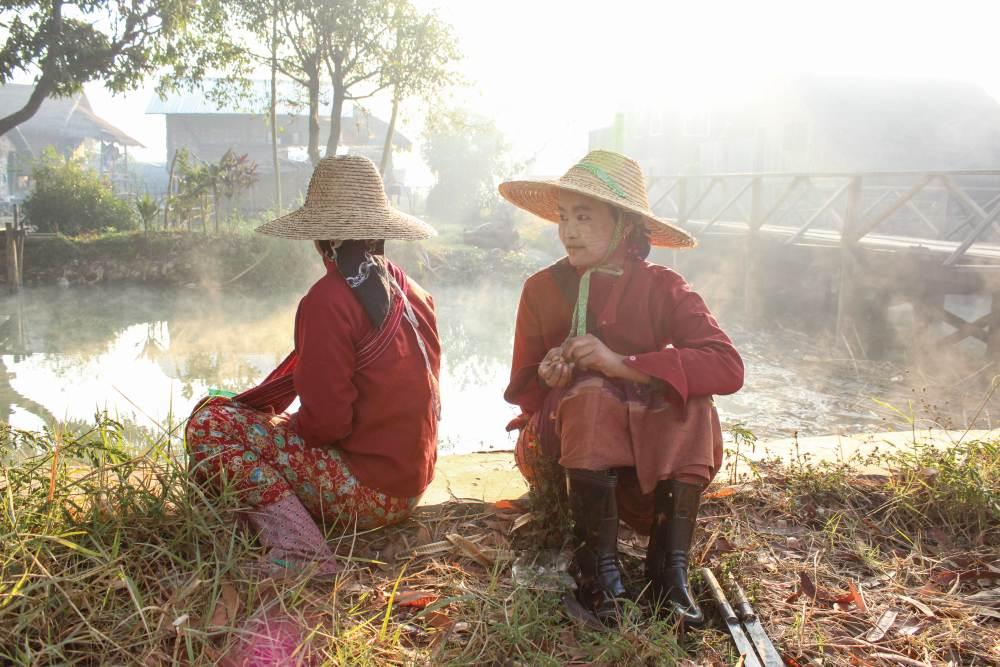
As a first timer to Burma, I wanted to see the ‘sights’ too, but not from the isolation of the back of a tour van. I was determined to experience more of the country as well; to get a picture of Burmese life in the spaces in-between the tourist hotspots.
A bike saddle turns out to be the perfect vantage point: “By bike, you get to see the rural areas not many tourists get to see,” nods Aung Zaw, our cycling guide, as we soar through countryside. “You see everything from a bike. You see it inch by inch. You hear things, smell things.”
Time to tour
The tour starts in Yangon before flying north to start the actual cycling from Nyaungshwe on the edge of Inle Lake, after which we’ll ride northwest into the Shan Highlands and south again to the ‘temple city’ of Bagan.
As our group gears up and heads out for our first day Monks walk the misty streets of Nyaungshwe in the early morning, some collecting alms. We ride out against the flow of the traffic, with villagers old and young heading into town for school or work on bikes, tractor carts and loaded trucks. Mist slowly burns off rivers and lakes, revealing silhouettes of fishermen working their nets, the water around them turned gold by the low sun.
We pedal through farms and sugar cane fields, past villages, ornate golden pagodas and a worn-looking teak monastery. White heron stalk through the roadside greenery. At In Thein, we park our bikes on a bridge and watch buffaloes wading in the river, before walking up to the hilltop Shwe Inn Dain Pagoda, whose 1000 crumbly conical stupas remind me of the Angkor temples in Cambodia.
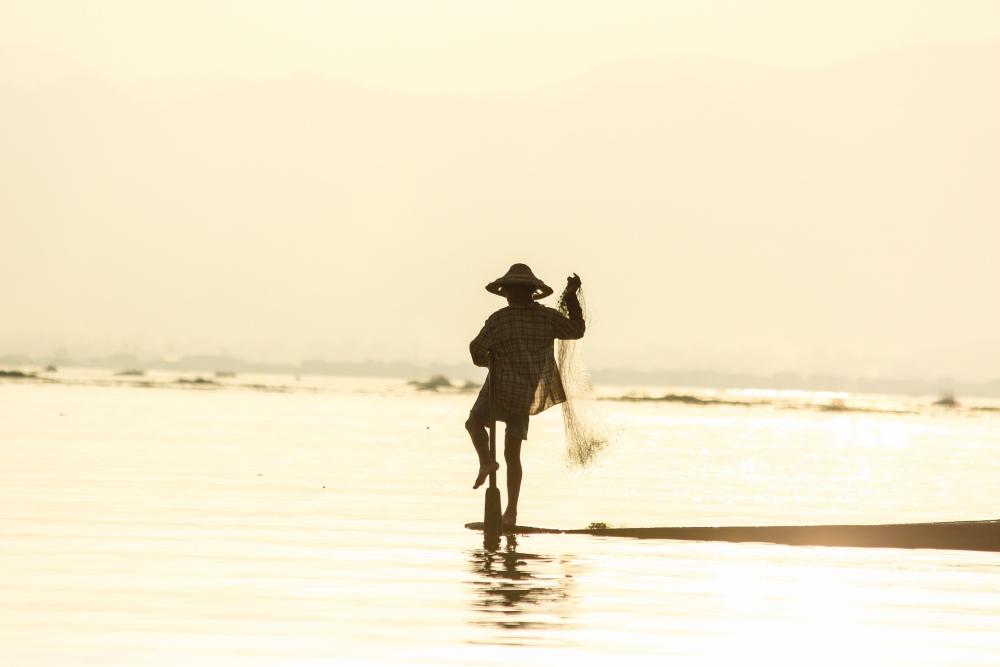
The afternoon is spent cruising on Inle Lake through villages of stilted houses and floating gardens. As we travel across the lake, I photograph the local fishermen, who still fish in the traditional way; standing, paddling with one leg, while using both hands to fish.
Smells drift across our path from burning incense, kitchen fires and farms next morning, giving us a deceptively tranquil start to our toughest day of riding, from Nyaungshwe up into the Shan Highlands. Some of Myanmar’s roads are surprisingly new and smooth, others bone-rattling or pothole-ridden. Soon, there are long steep climbs, including a leg-burning eight kilometre ascent in the hot afternoon sun. Relieved to reach the summit, I relish freewheeling down the other side, a great rush of freedom as the landscape opens up ahead.
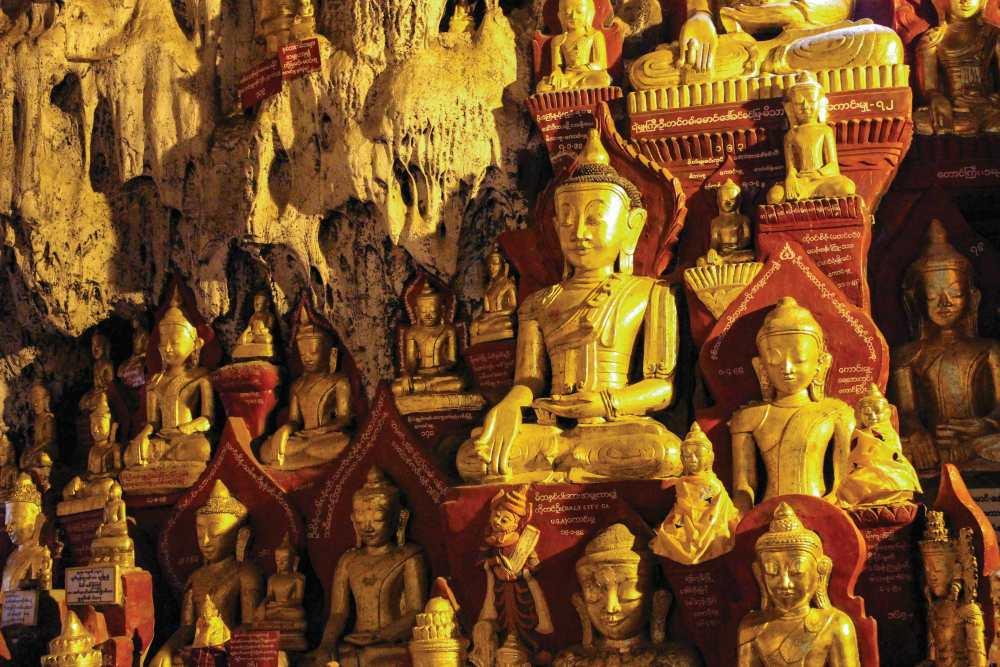 We have to dig deep over the day’s 95 kilometres, often on challenging, uneven roads. By the end of the day, I ache. Climbing 1000 steps up a mountain doesn’t seem an obvious choice, but that’s how we end the day, exhausting our remaining energy to reach Shwe Oo Min pagoda. We climb and enter barefoot into the limestone cave, which glows with 8,094 golden Buddha statues. From the high viewpoint, we can see Boke Ta Lote lake, also shining gold, from the setting sun, and our overnight stop, Pindaya. Cold beers at the end of the day feel thoroughly deserved.
We have to dig deep over the day’s 95 kilometres, often on challenging, uneven roads. By the end of the day, I ache. Climbing 1000 steps up a mountain doesn’t seem an obvious choice, but that’s how we end the day, exhausting our remaining energy to reach Shwe Oo Min pagoda. We climb and enter barefoot into the limestone cave, which glows with 8,094 golden Buddha statues. From the high viewpoint, we can see Boke Ta Lote lake, also shining gold, from the setting sun, and our overnight stop, Pindaya. Cold beers at the end of the day feel thoroughly deserved.
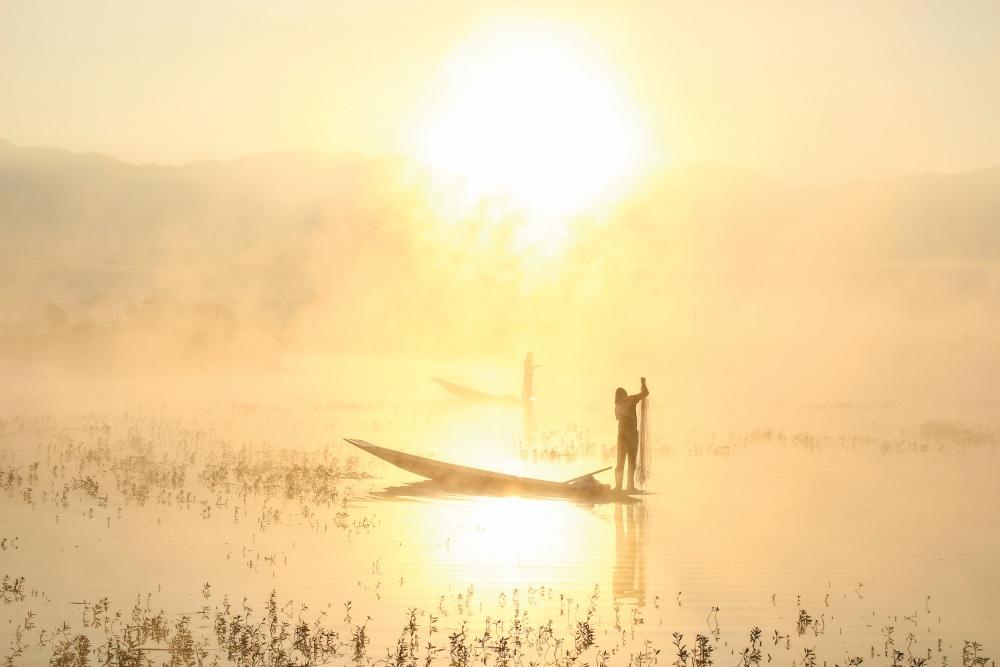
Miles and smiles
Rested but saddle-sore, we set off again next day for more rolling hills. We dig deep and grind our way through some of the miles, a few of our posse choosing to see out parts of the ride in the support van. But there is also fun riding, with long fast descents and cool avenues shaded by gum trees. We don’t see another tourist all day, just men on mopeds, farmers on ox carts, and women with baskets on their heads.
Schoolchildren run to the banks to shout the local greeting “Mingalabar!” Monks nod from the roadside. Road crews wave. Aung San Suu Kyi calls Burma a land ‘of charm and cruelty’, a country that’s endured suffering and poverty through 50 years of military rule, but the people are still smiling. Aung Zaw says that’s the country’s largely Buddhist faith.
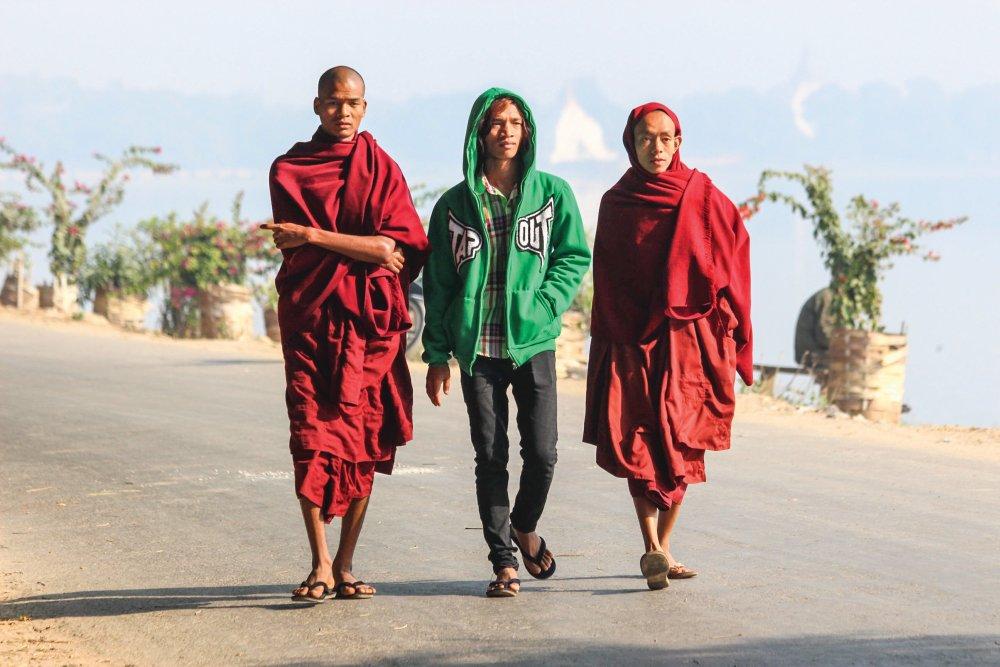
We ride through Mandalay next morning, with a rush of sights along the diverse loop. On busy streets, we need to pay attention, weaving to avoid dogs, stray white cows, spluttering trucks, and women carrying baskets of flowers and vegetables to market. “This is where I was born,” Aung Zaw tells me, riding alongside. He sounds proud, not just of Mandalay, but of his country and the increased freedom to show it off to tourists. “We’ve been waiting a long time for this,” he says, smiling.
It would be wrong to suggest Burma’s problems are all in the past, though. The country has complex issues and continuing conflict in some areas. The ruling junta has, as expected, proved reluctant to give up power. Many political prisoners remain in prisons under President Thein Sein. Poverty, too, remains a pressing issue. Aung Sang Suu Kyi’s National League for Democracy has continued its battle towards democracy for the country, though some have also criticised her for not speaking out more on violence against Muslim minorities. There’s talk of stagnation in the tourist industry, too. Myanmar feels like a country in transition.
Aung Zaw speaks of seeing books in markets that previously would have got the seller a lengthy prison sentence. “It (change) will not happen overnight,” he tells me. “It will take time.”
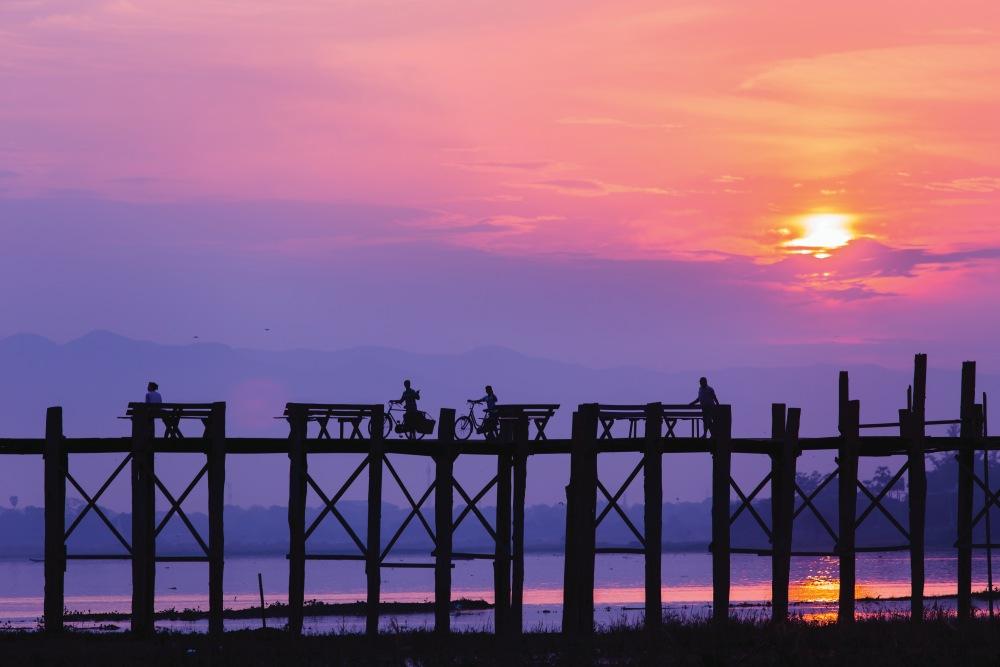 Cycling sights
Cycling sights
We bike to U Bein bridge, the longest teak bridge in the world and one of Burma’s most iconic sights, where I photograph ox carts crossing through the water, fishermen casting nets and – a new sight for me – boatmen shepherding massive fleets of ducks across the river. Riding on through backstreets, I am hit by blasts of music and workshop machinery, then flow with the traffic across the big industrial Yatanapon Bridge with views of boats on the Ayerwaddy and golden pagodas downriver.
At Mingun, we walk around Mingun Pagoda, an ambitious project by a former king to build the largest pagoda in the world – solid brick 170 metres high. He only got to 60 metres, but it’s still an impressive achievement. But for me, it isn’t just tourist sites like this that make an impression, but also the people and places we see in villages and countryside along the road. Riding on from Mingan, for example, we come across an initiation ceremony for novice monks. Boys and girls, decked out in costumes of pink, orange and gold, fill the tent, while a master of ceremonies chants Buddhist stories and a band makes a jazzy racket on xylophone and drums.
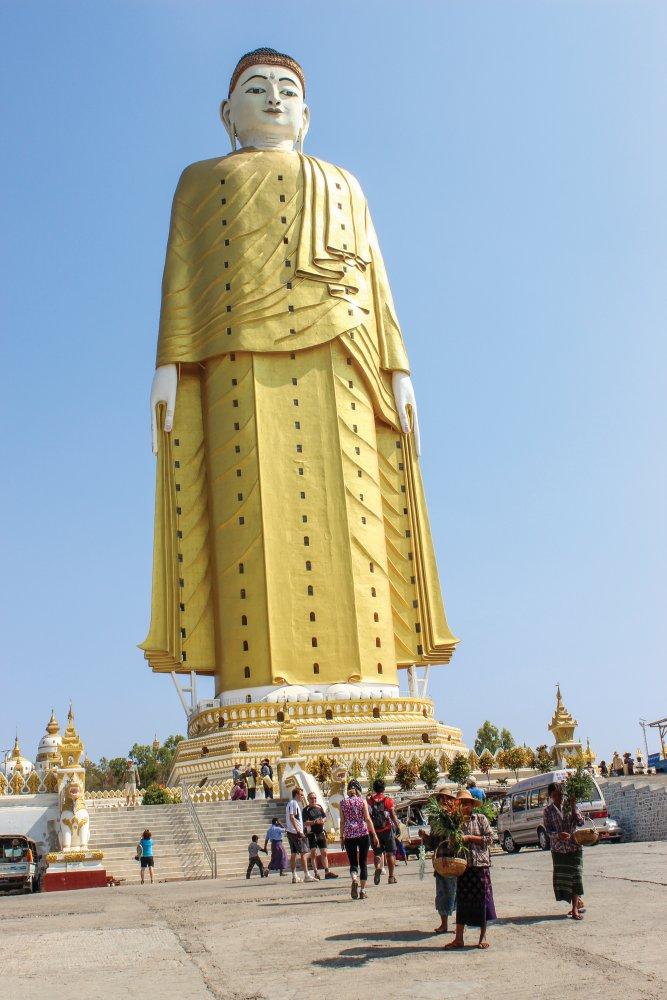 The following day’s ride takes us off a busy highway and onto quiet country lanes, through villages of thatched bamboo houses. It isn’t hard to see where we are heading; Monywa Buddha is one of the tallest Buddha statues in the world, the bright golden figure coming into view through the trees, standing 140 metres tall on the hills and guiding us in. Laid out in front of him, another 91-metre statue, the largest reclining Buddha in the world, and at the foot of the hill below, 1,000 smaller Buddha statues sit cross-legged.
The following day’s ride takes us off a busy highway and onto quiet country lanes, through villages of thatched bamboo houses. It isn’t hard to see where we are heading; Monywa Buddha is one of the tallest Buddha statues in the world, the bright golden figure coming into view through the trees, standing 140 metres tall on the hills and guiding us in. Laid out in front of him, another 91-metre statue, the largest reclining Buddha in the world, and at the foot of the hill below, 1,000 smaller Buddha statues sit cross-legged.
A steep winding road leads us to the feet of the giant standing Buddha. Bikes parked, we climb up the statue’s interior, with artworks across each floor, paintings showing sinners skewered on spears roasting over flames.
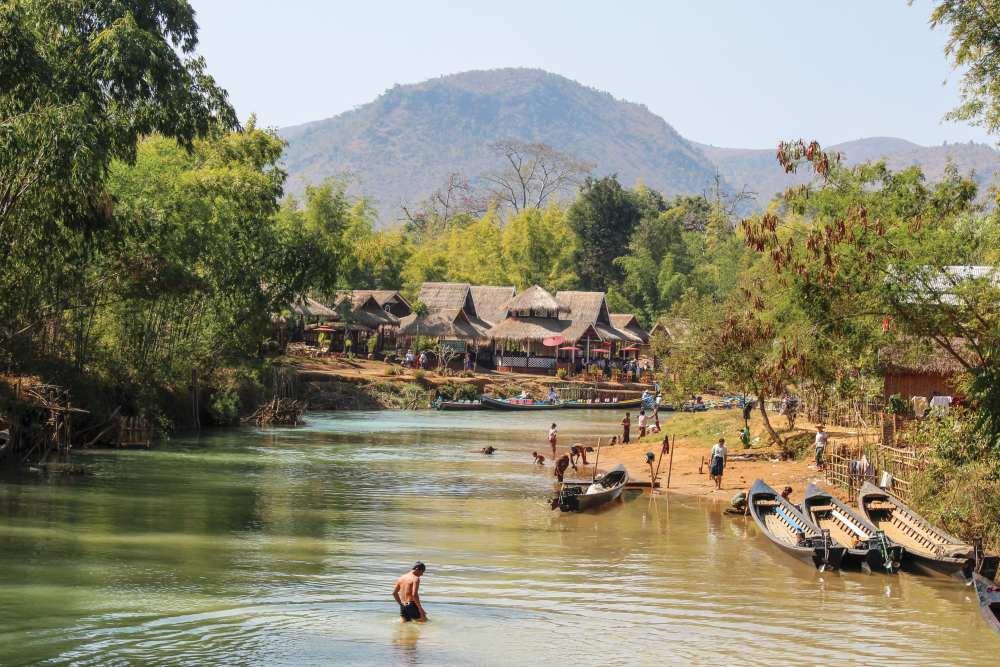
The next afternoon, we carry our bikes onto a wooden boat to cruise down the Ayerwaddy river, getting off on the other side for a few kilometres of pedalling into Bagan. The ‘temple city’ has around 2,300 pagodas within 42 square kilometres. We zip around the highlights by bike, including the oldest, Shwe San Daw Pagoda, and the holiest site, the gold-covered Shwe Zigon Pagoda.
At Shwe San Daw, I climb steps to the top to look out on the classic landscape of Bagan; countless spires of brick red, gold and white pointing up out of the trees, while chanting drifts across the sun-bleached landscape.
Our last day of riding starts at the hilltop monastery at Mt Popa. Long days in the saddle have left me feeling fit and strong, and I relish every pedal stroke of the day, not just fast-flowing downhills but every climb too, before, finally, we roll down to Bagan and park for the last time.
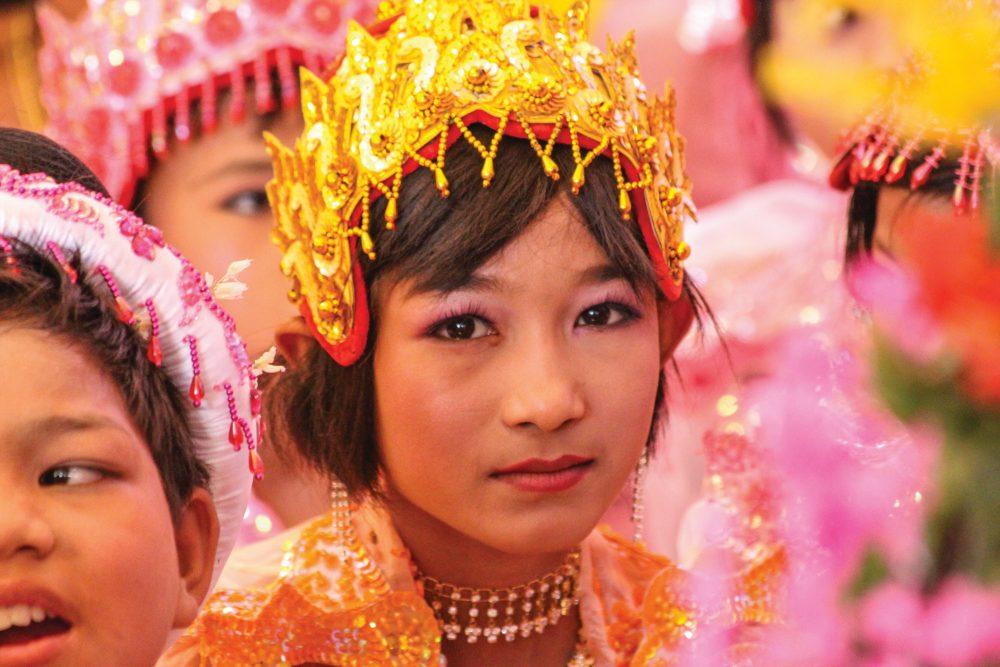 Myanmar send-off
Myanmar send-off
The cycling over, we fly south to Yangon. I set out early to visit Shwedagon Pagoda, Burma’s holiest site, said to contain eight hairs of the Buddha. The main stupa shines with gold and is lit up at night. This is also where General Aung San, Aung San Suu Kyi’s father, demanded “independence now” from British rule in January 1946, and where, 42 years later, his daughter demanded democracy from the military regime before 500,000. She was put under house arrest for the next 21 years.
I walk around the complex, watching monks and local people as they make their offerings. Buddhism’s an essential part of daily life here, and people arrive early to pray before their days start. It’s a tranquil place of gentle chanting, chiming bells, and burning incense.
I spend the day exploring the streets of Myanmar, and at night take a taxi to House of Memories, a touristy restaurant off the U Wizara Road, in a colonial-style house that used to be the home of General Aung San. The food is nothing special, but a friendly waiter shows me upstairs, into General Aung San’s office where his typewriter still sits on his desk. Next door, in the old meeting room, there’s a table where the Independence Army once sat and made plans for Burma.
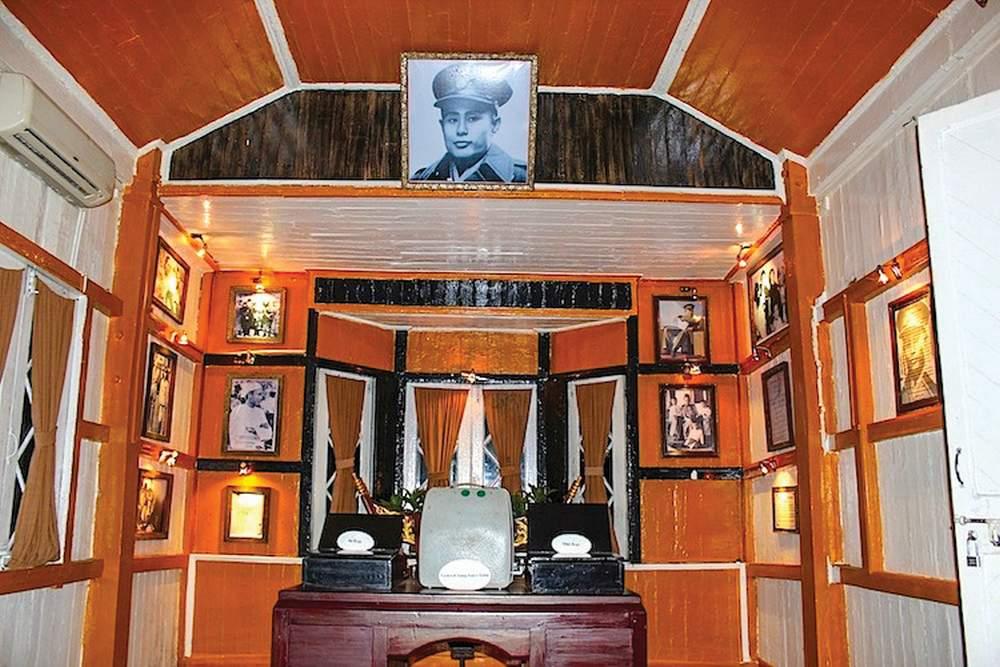
There’s a family photo, too, with General Aung San, his wife and their children, including Aung San Suu Kyi when she was just a young girl. There’s been a vast amount of change in the 60 or so years since the photo was taken. More, it seems, is on its way.
Our trip
Graeme traveled with Exodus on their Cycle Myanmar (Burma) trip. The 16-day trip costs from £2,849 per person, including return flights from the UK, accommodation, tours, guides and mechanics, and breakfasts. exodus.co.uk

